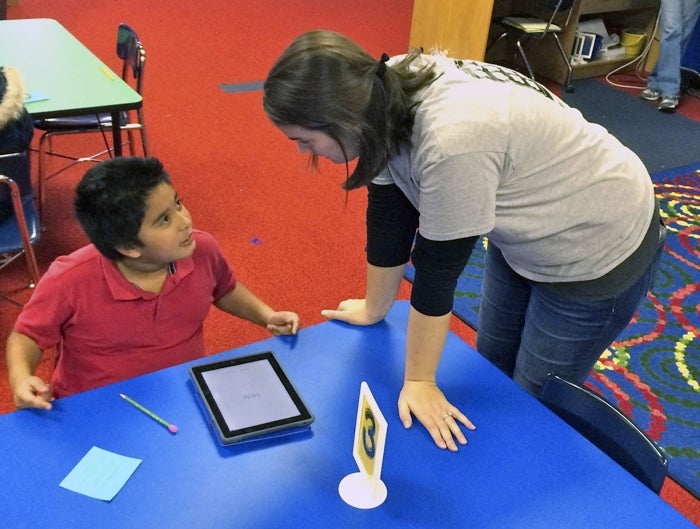Rowan-Salisbury’s digital rollout nears completion
Published 1:00 am Tuesday, February 3, 2015

- David Hernandez Mejia recieves instruction from Ann Gregson about how to set up his iPad. Communities in Schools will help some students get internet access at home with wifi hotspots.
The Rowan-Salisbury School System has steadily deployed digital devices to its teachers and students since the beginning of the school year, and the work is almost done.
The district’s 20 elementary schools will finish deploying iPads by Wednesday – the final step in Rowan-Salisbury’s one-to-one digital conversion. The digital conversion provides either a laptop or iPad to each of the district’s teachers and students in third grade and above. The devices will be used in the classroom and at home.
Knollwood Elementary third-graders received their iPads Monday, and the fourth- and fifth-graders received theirs Thursday and Friday of last week.
The students were greeted by Pharrell Williams’ hit song, “Happy,” as they entered the media center by class. Ann Gregson, Knollwood’s technology facilitator, welcomed the students.
Each student found his or her way to a table with assigned iPads and followed along as Gregson helped them set up their devices.
“It’s pretty cool,” third-grade teacher Alyssa Gilmore said to some of her students.
“It’s not pretty cool – it’s awesome,” her student, Chase Graham, corrected her.
Gregson, along with Renee Cunningham, the school’s media coordinator, and additional staff from Knollwood’s partner school, helped the students through each step.
After the iPads were set up, the students used the devices to take pictures of themselves with a variety of props in a photo booth.
“We wanted to make it like a party,” Gregson said. “We wanted it to be exciting for them.”
“Most of them don’t have stuff like this at home,” she said.
She added that the photo booth gave students the opportunity to use their new devices before they went back to class.
The deployment process at the elementary schools varied greatly from the teacher, high school and middle school rollouts.
For the teacher deployment, all the district’s teachers were bused to the district’s technology warehouse, and 80 staff members volunteered to help the teachers set up their laptops.
Director of Digital Innovation Andrew Smith said his team wanted to minimize the amount of instructional delay caused by the rollout in the schools, so rather than busing high school and middle school students to a central location, the district’s technology facilitators went to each high school and middle school. They divided up and went classroom to classroom until all students had their laptops or iPads.
“Our real goal was efficiency and practicality,” Smith said.
With 20 elementary schools, however, that model was unrealistic.
“Elementary school students need more one-on-one time,” Smith said.
So each school was assigned a partner school, and the they were given 10 school days for the technology facilitators and media coordinator to deploy the devices at both schools.
The model gives the elementary schools more flexibility, Smith explained.
“So far they’ve done really, really well,” he said.
The district distributed roughly 1,400 MacBook Air laptops to teachers, 6,200 MacBook Air laptops to high school students, 4,700 iPads to middle school students and 4,500 iPads to third- through fifth-graders.
According to Smith, the district’s “next big goal” is to provide iPads to each of the district’s kindergarten through second-grade students as well. These devices would come from existing inventory and would only be for use in the classroom.
Smith said the hope is that “powering up” in the classroom rather than “powering down” will lead to a more engaged learning environment and help “bridge the digital divide.”
“A lot of the students don’t have an opportunity to have a device at home,” he said, adding that the devices give the students the opportunity to “learn anywhere and everywhere.”
It’s not all about the device, however.
“It’s about instructional change,” Smith said. “Teachers are no longer dictators of learning.”
Students have a vast amount of knowledge at their fingertips, and teachers must help them learn how to apply it.
Teachers are going through professional development to learn how to teach effectively with digital devices.
“They have to think about the way they instruct students differently,” Smith said.
Students will be able to keep their devices until the end of the school year.
High schoolers will be able to use it “until they don’t need it anymore,” he said, adding that they’ll be able to use them until their last exam.
Elementary and middle school students will have their devices taken up the last week of school.


